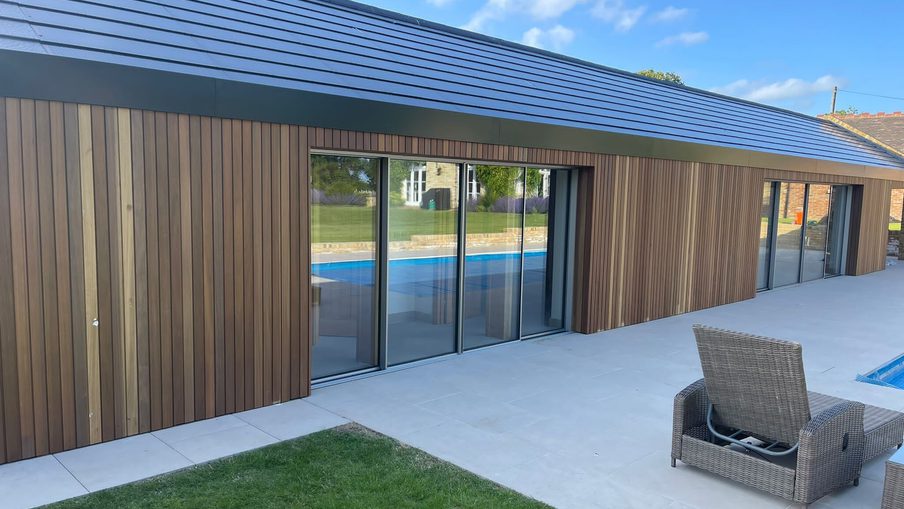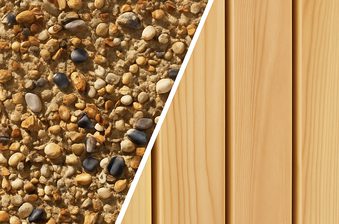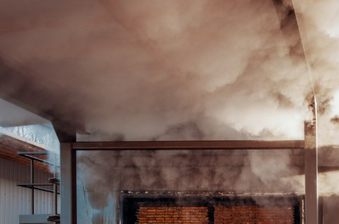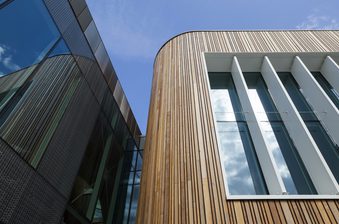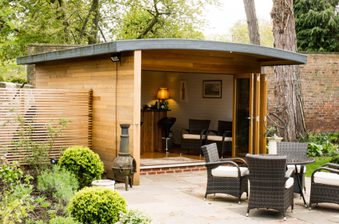Wood is undeniably beautiful for cladding, decking or fencing, but it’s a natural material that can decay. When used outdoors, particularly in the UK, it’s asked to stand up to a punishing range of elements.
The practice of modifying timber to improve its durability has been around as long as humans have been using wood. Some of the most primitive types of wood treatment were taken from plant oils, which were shown to slow the effect of fungi.
Fast forward many thousands of years and two of today’s most popular modern methods for modifying wood are heat treatment (commonly known as thermal modification) and pressure treatment (also known as ‘tanalised’ or chemically-treated timber).
Despite aiming to achieve the same thing — increased outdoor durability and dimensional stability — these two methods of timber modification have many differences (particularly when it comes to environmental credentials) that might play a role in which type you choose for your next project.
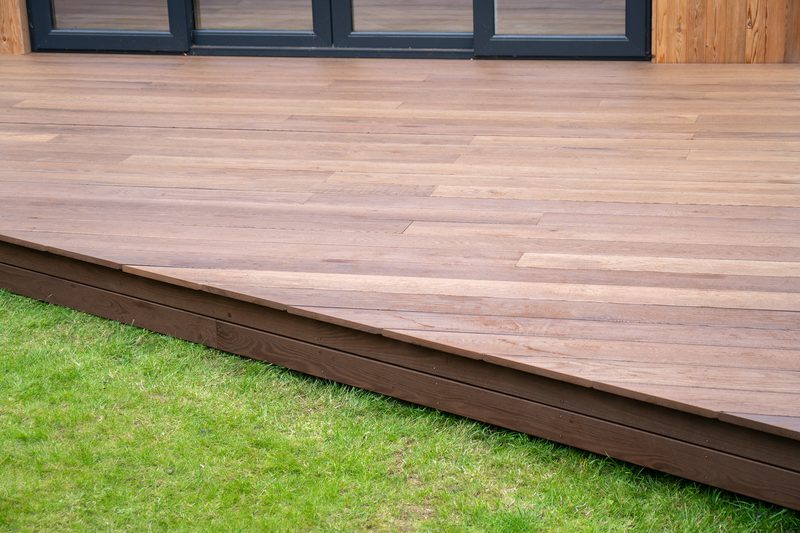
Heat treated vs. pressure treated (tanalised) timber: what’s the difference?
When used outdoors, wood can be subject to moisture, weathering and fungi. Over time, these elements break down the wood’s compounds. Thermally-modified wood has been treated with heat to alter its properties and protect it against these destructive outdoor elements. Pressure treatment has the same aim, but makes use of fungicidal chemical preservatives to protect the wood.
Timber thermal modification: how does the process actually work?
Heat treatment produces changes in the cellular structure of wood, protecting it against decay. Temperatures between 160–260°C (320–500°F) degrade the hemi-cellulose, a substance within the wood which fungi use as a food source. The process also reduces the equilibrium moisture content of the wood, stopping it absorbing so much water (therefore boosting dimensional stability).
To prevent the wood’s combustion, oxygen levels in the kiln are reduced during the heat treatment process (using nitrogen or water vapour). The specifics of the heat treatment method differ depending on which species of wood is used.
Thermally modified wood is a relatively new ‘product’, at least on a commercial scale. Its popularity has soared over the past decade as a result of concerns about the environmental impact of chemicals used in pressure treatment, becoming a mainstay of eco-conscious homeowners and architects in the past few decades.
One of trailblazing types of thermally modified timber is Thermo-Nordic Pine from Finland, which starts life as Scandinavian Pine before undergoing a three-stage treatment involving high-temperature drying, heating and then cooling, which restores the moisture content.
More recently, innovative heat treated woods include Thermo-Tulipwood CAMBIA® (tulipwood) and Thermo-Ayous (ayous, a tropical African species). Other popular species used in heat treatment are spruce and birch.
View project: FSC-certified Thermo-Ayous shadow gap cladding
Timber pressure treatment (tanalised wood): how does the process actually work?
Wood that is pressure treated has been preserved with chemicals during its manufacture. The wood is placed in a vacuum treatment chamber, which removes all the air from its cells. After this, the vacuum forces wood preservatives deep into the wood. These chemicals are poisonous to wood-destroying fungi, hence the improvement in outdoor durability.
Chemicals used may also include fire retardants, which help the wood to char quickly instead of combusting. Wood that has been pressure treated is also known as ‘tanalised’.
Pressure treatment has been widely used for longer than heat treatment, growing hugely in use during the industrial revolution as demand for weather-resistant wood increased (such as for telegraph poles and railways). This method still accounts for the vast majority of modified timber sold, including that which you’ll most likely find at home improvement and DIY stores in the UK.
Heat treated vs. pressure treated timber: durability
Heat treated wood has excellent outdoor durability, with the thermal modification process protecting the wood against decay by causing cellular changes in the wood.
Heat treated wood provides good decay resistance when used for applications that experience occasional wetness, but for applications that experience very frequent contact with water, chemically-treated wood is preferable for preventing fungi attack. The chemicals used to impregnate the wood during the pressure treatment process are fungicidal in nature.
The effects of wetting and ultraviolet light still cause both heat treated and pressure treated timber to change colour, just as they do for untreated wood, but this process is usually slowed with thermally modified wood.
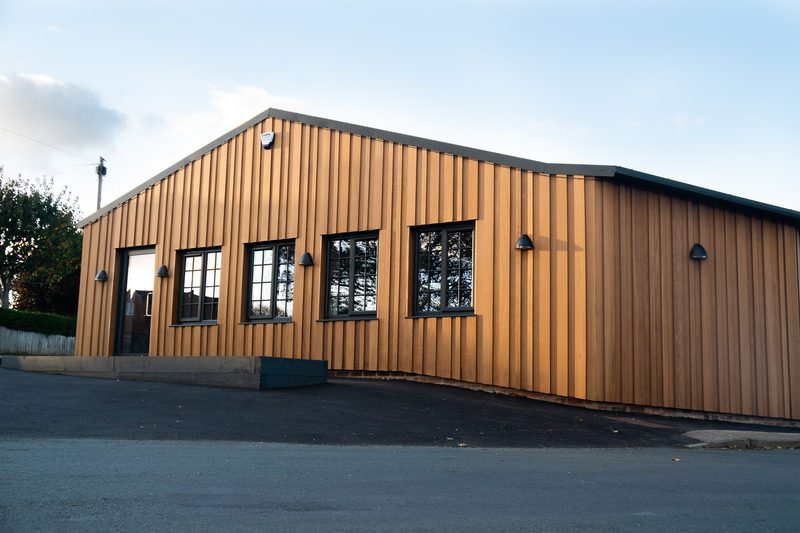
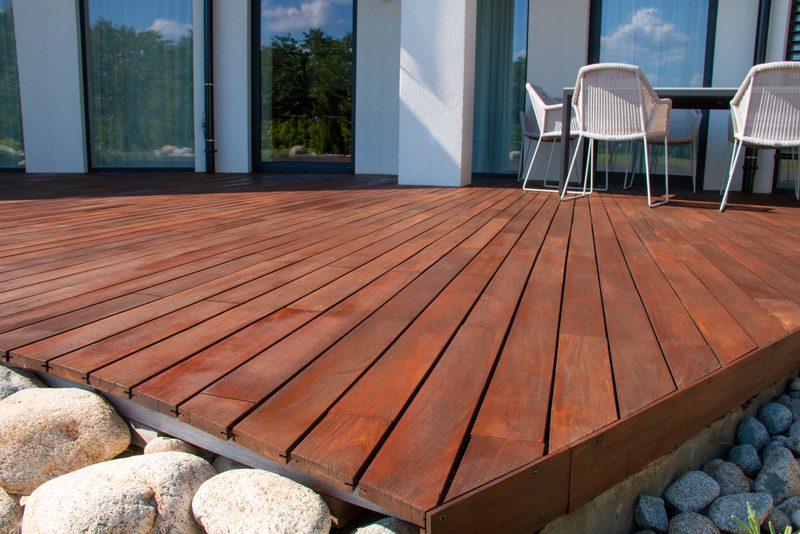
Heat treated vs. pressure treated timber: dimensional stability
Thermally-modified timber has excellent dimensional stability — superior to that of pressure-treated and chemically-treated wood. Because of the reduced equilibrium water content, thermally modified wood is better able to resist changes in moisture, taking on and losing less water in response to the surrounding environment. This makes timber projects undertaken with thermally modified wood less prone to warping and bulging.
Heat treated vs. pressure treated timber: strength
The thermal modification process tends to cause some density loss in the treated timber, which is associated with reduced load strength — up to 30% in some cases. As a result, heat-treated timber is not recommended for structural use. Chemically-treated wood, on the other hand, is not known to have a negative impact on the strength of the wood.
Heat treated vs. pressure treated timber: appearance
All heat treatment processes result in a darker colour than the original, untreated wood. This can provide them with versatile darker brown hues, resembling many luxurious tropical hardwoods, like teak — great for a design-led architectural look. A longer treatment time produces a darker wood.
Pressure treatment, on the other hand, does not have any big impact on the appearance on the wood, apart from a potentially browner tint. The appearance of tanalised timber can vary to quite an extent, but you’ll likely be most familiar with the knotty medium-brown appearance of timber sold at home improvement stores.
In this way, it might be fair to say that heat-treated wood can discourage the overharvesting of environmentally at-risk tropical hardwoods by providing a stunning darker alternative, benefiting the environment (more on this just later!). Some types of heat treated wood can have a caramel-like smell, which if undesired, can be removed using a surface treatment.
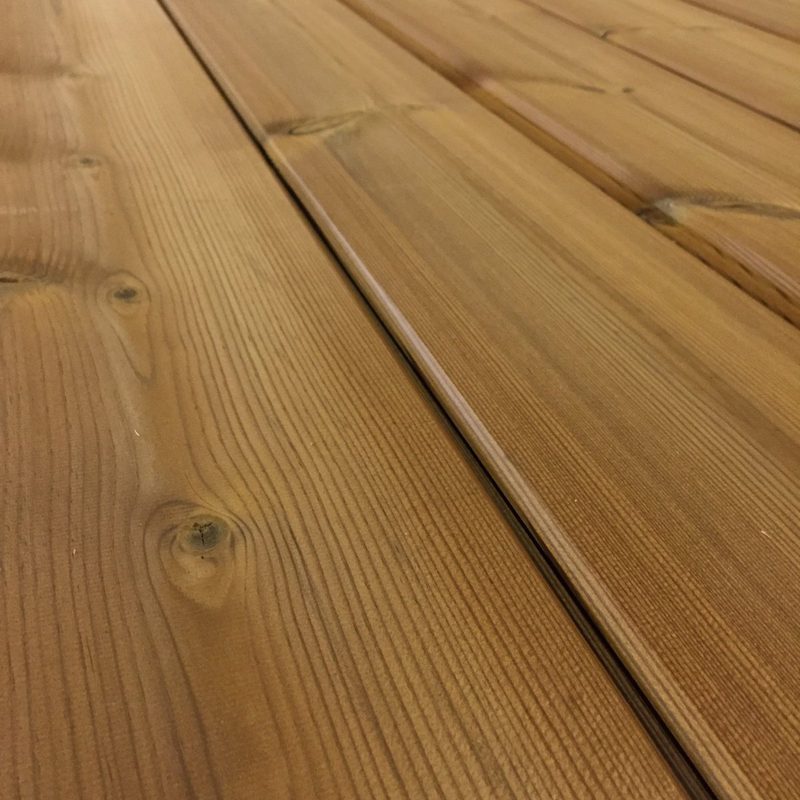
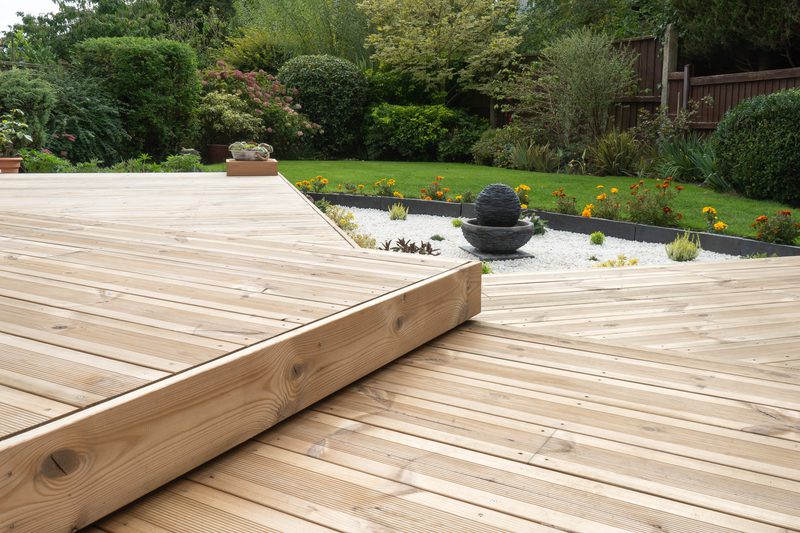

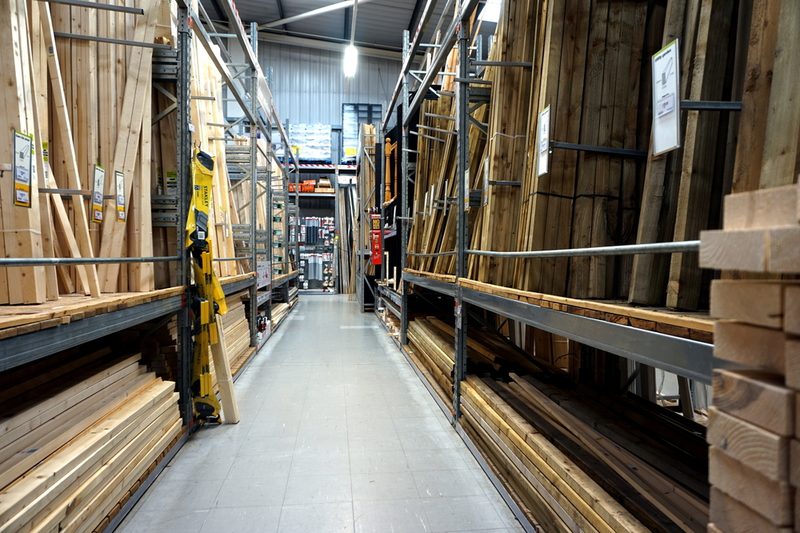
Heat treated vs. pressure treated timber: uses
Both types of treated wood perform very similar roles — they can be used internally, but the enhanced durability usually means they’re applied outdoors for cladding (siding), decking, fencing, and occasionally outdoor furniture or windows and door frames.
Heat treated vs. pressure treated timber: workability
There are generally very few (if no) differences between heat-treated and pressure-treated wood when it comes to workability. Some types of thermally-modified wood may have a slight bit of brittleness, which calls for careful handling to avoid damage at the edges. Since the heat treatment process can produce acetic acid, be sure to use appropriate fixings (such as stainless steel) to avoid corrosion.
Because the heat-treatment process makes the wood absorb less water, water-based finishes can be harder to apply, but wax and oil treatments are not affected.
Heat treated vs. pressure treated timber: sustainability
Many people consider heat-treated wood to be more environmentally safe than pressure-treated timber. This is because, unlike with pressure treatment, the thermal modification process does require use of potentially damaging chemicals.
The chemicals used to create pressure treated wood are poisonous to insects, fungus and bacteria — this is what gives it its durability — but they can also have harmful effects for humans and the environment.
A commonly-used preservative in pressure-treated wood is creosote, which can cause problems at the end of its life cycle. Chemicals can leach into the environment, impacting ecosystems. Disposing of pressure-treated wood can also be more challenging, demanding a controlled landfill strategy.
The importance of making decisions that minimise our impact on the environment is growing in importance in all walks of life, particularly architecture. Concerns about the impact of the chemicals involved in pressure treatment have spurred on the large-scale development of the commercial thermal timber treatment trade.
Heat treatment does not interfere with the life cycle of the wood; it is disposed of in exactly the same way as if it was untreated. Wood is a ‘carbon sink’ that absorbs CO2 from the atmosphere through its life cycle.
Because its darker colour mimics exotic timber species, heat-treated wood can also discourage unsustainable deforestation of under-threat tropical hardwoods. It enables consumers who love the exotic look to have much less of an environmental impact.
Heat treated vs. pressure treated timber: cost
Pressure-treated wood is the kind you’ll usually see in home improvement and DIY stores in the UK, and it’s much more widely available than heat-treated wood. As a result, it usually comes in at a lower cost.
Take a typical tanalised (pressure treated) softwood decking board, for example. It will cost approximately £15–20 per m² + VAT. A deck in Thermo-Nordic Pine costs in the region of £35 per m² + VAT — so decidedly more expensive (but far more environmentally friendly and visually appealing, we’d argue!).

Start your timber project today
We stock timber cladding, decking and fencing in a wide range of species, including premium thermally-modified options like Thermo-Ayous and Thermo-Nordic Pine.
Then there’s all your beautiful, naturally-durable outdoor woods like Western Red Cedar, Alaskan Yellow Cedar, Siberian Larch, Douglas Fir, European Oak as well as exotic African hardwoods like Iroko and Balau.
However big or small your project, don’t hesitate to contact our team.
Get in touch
